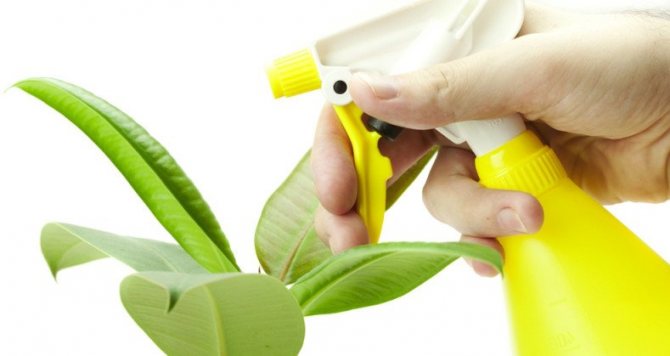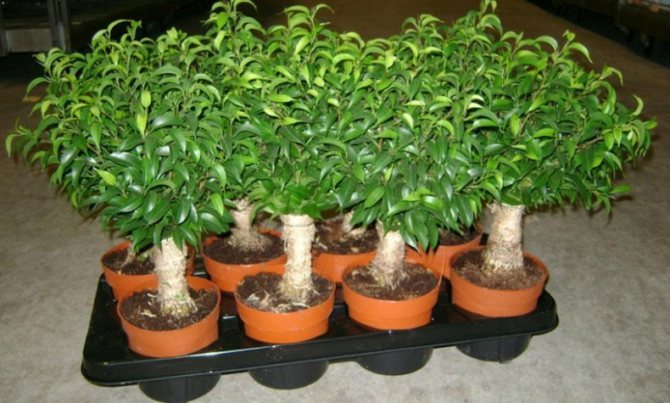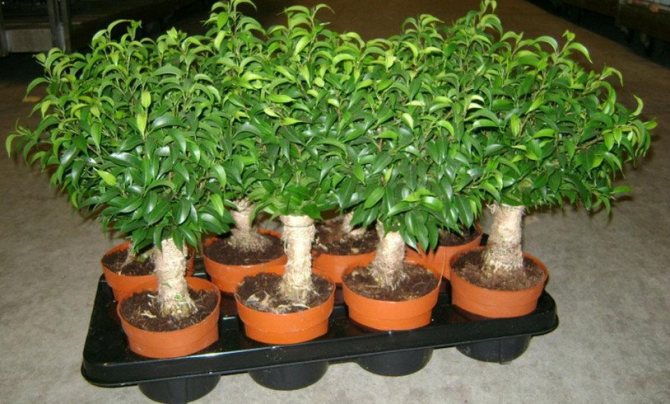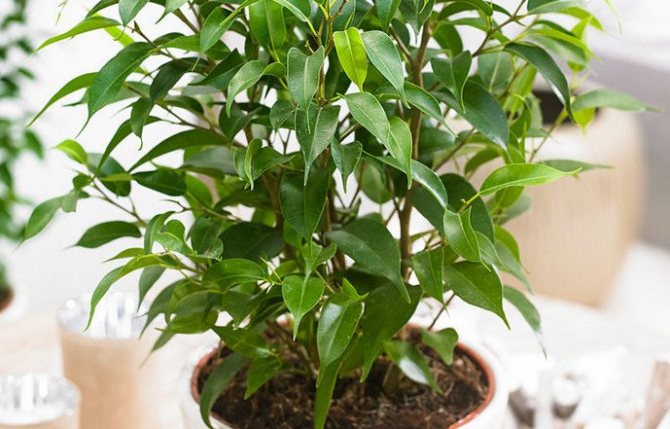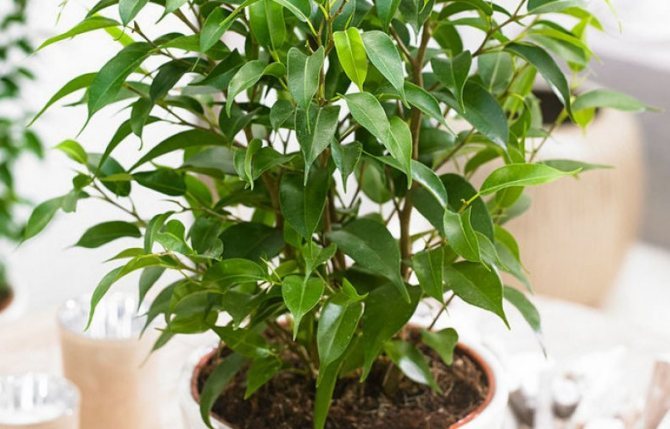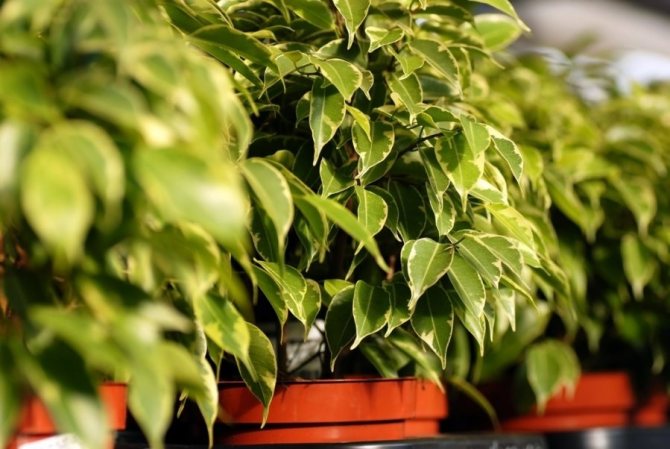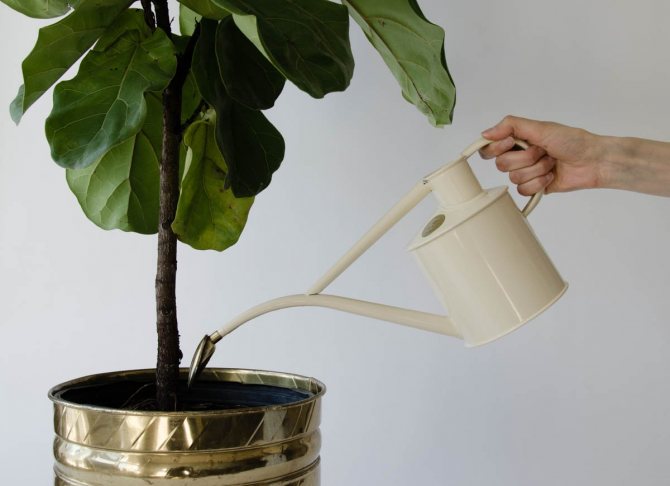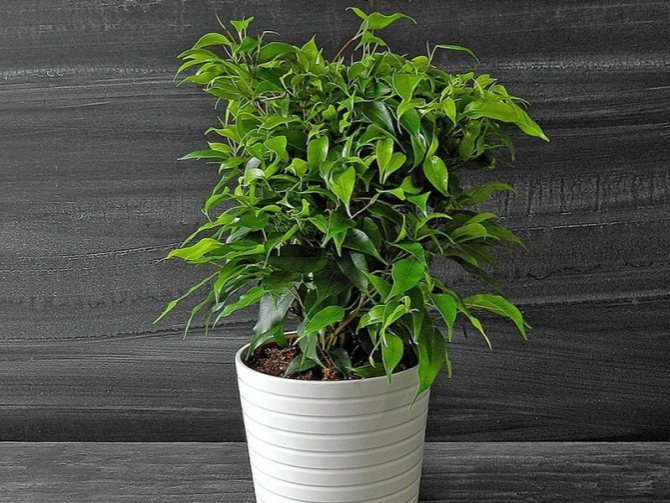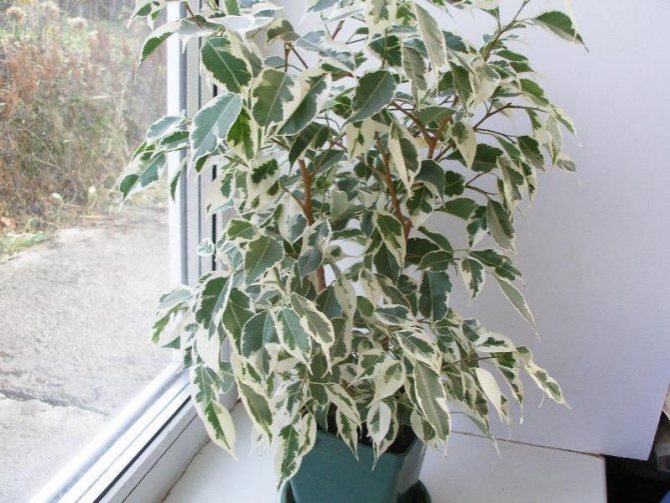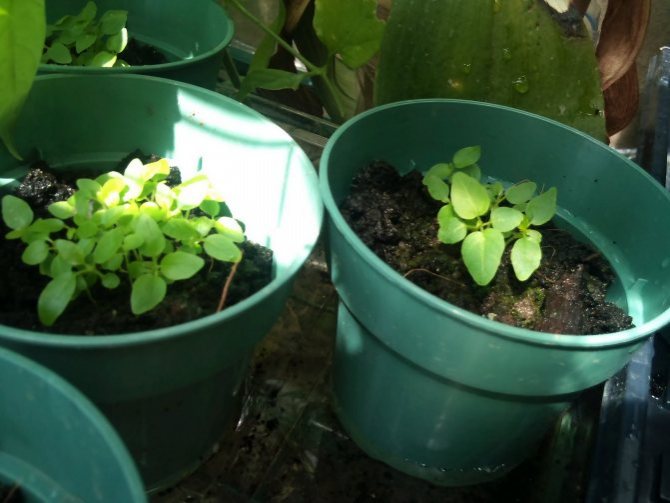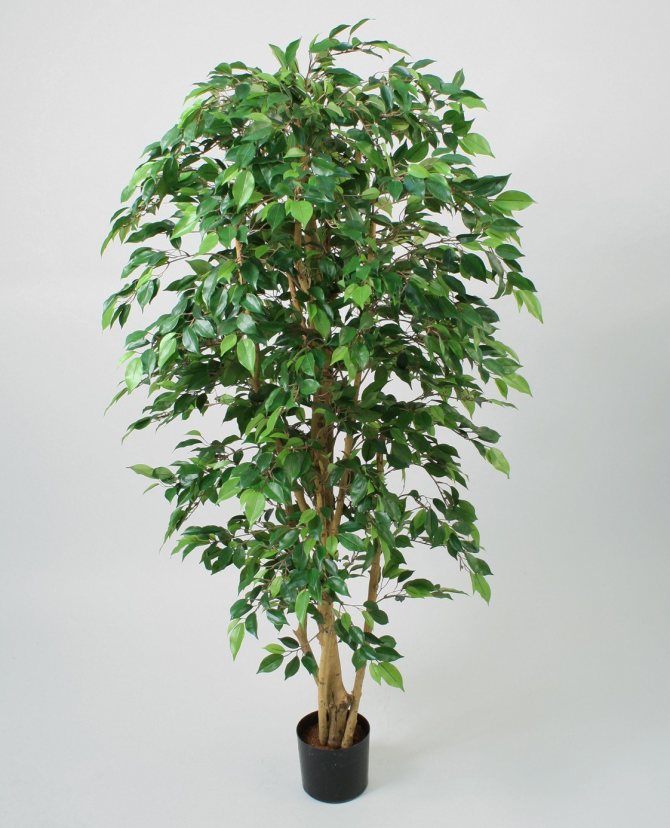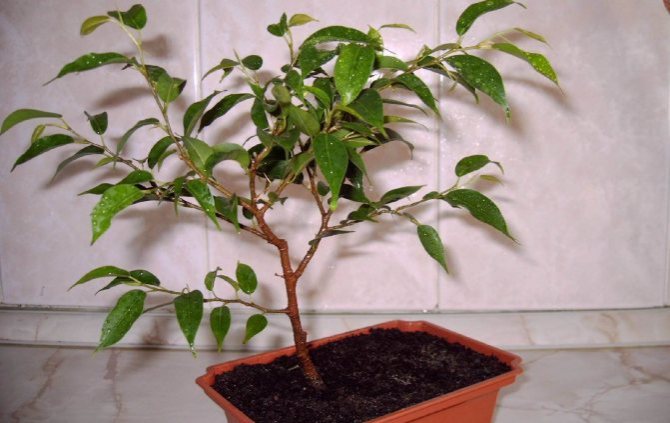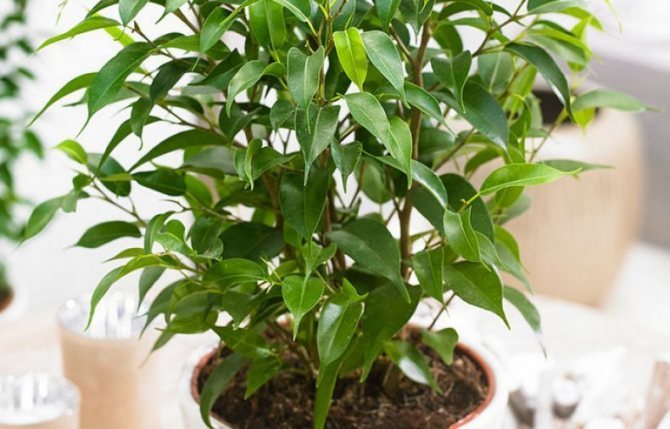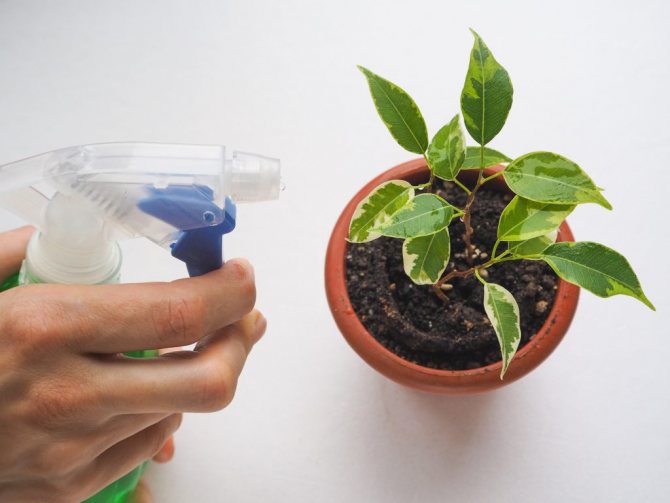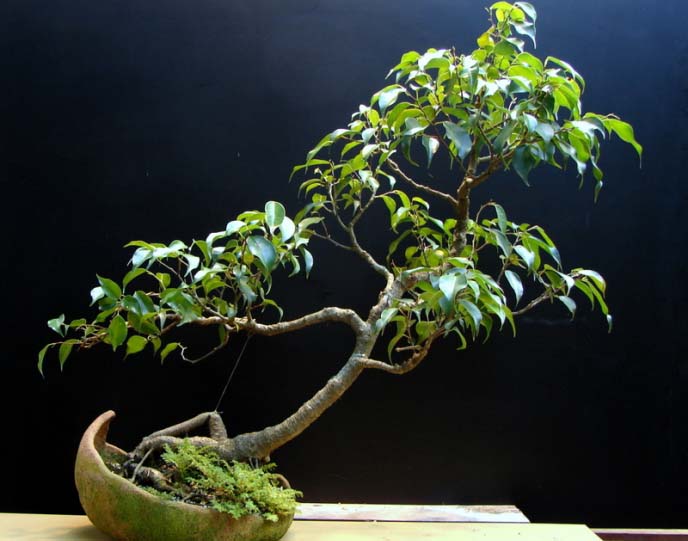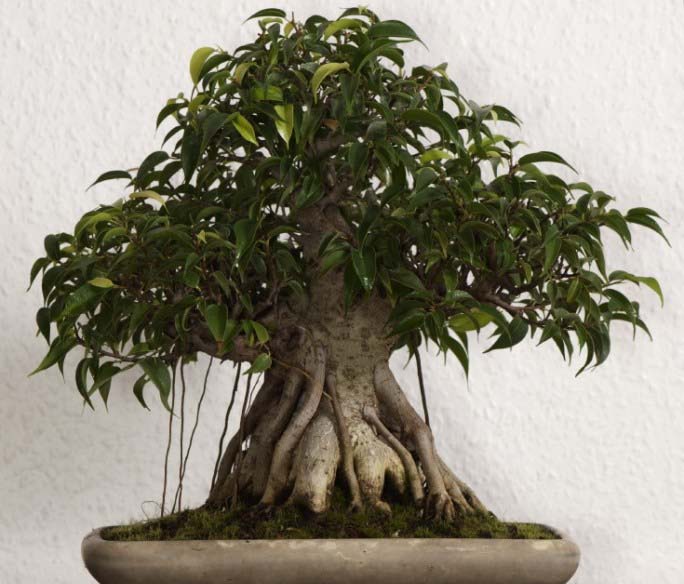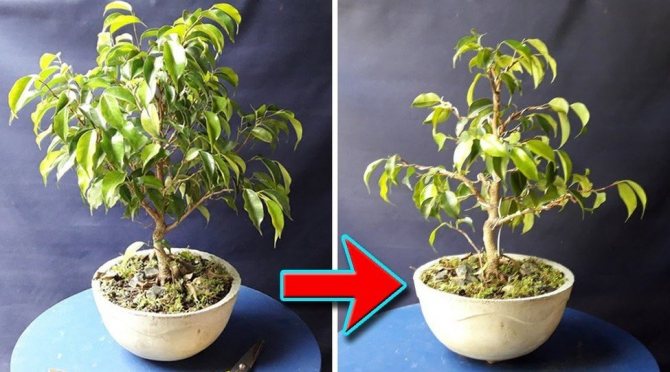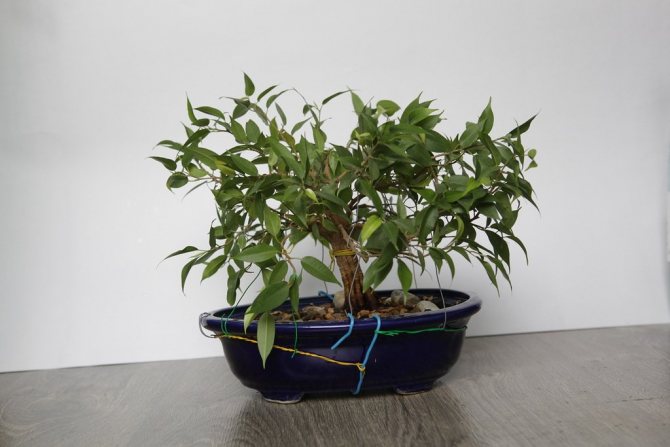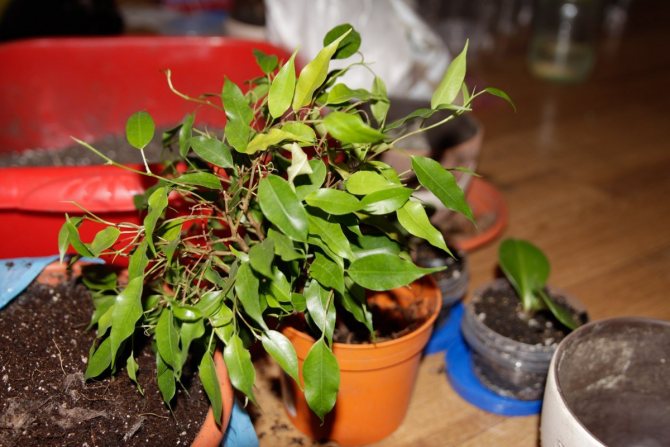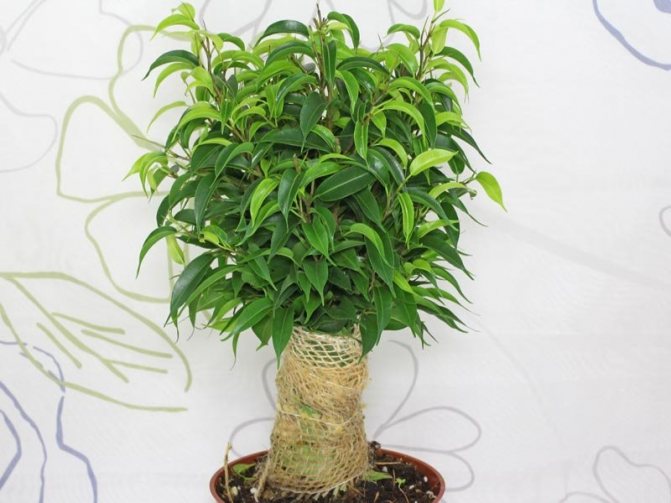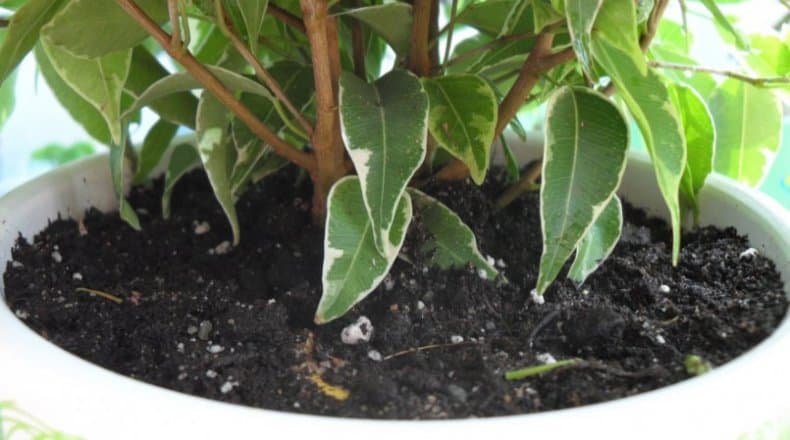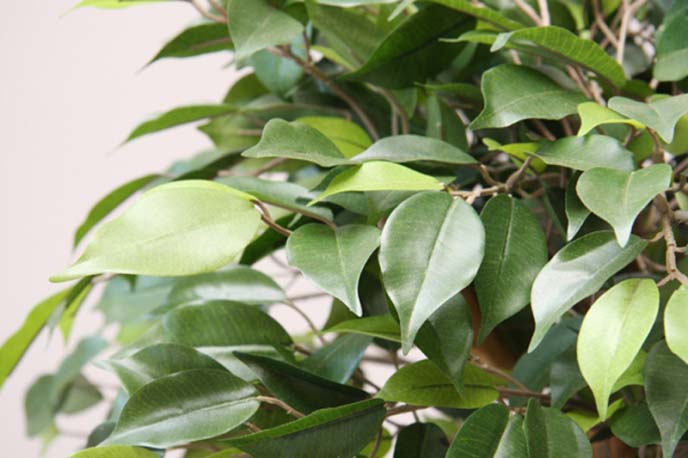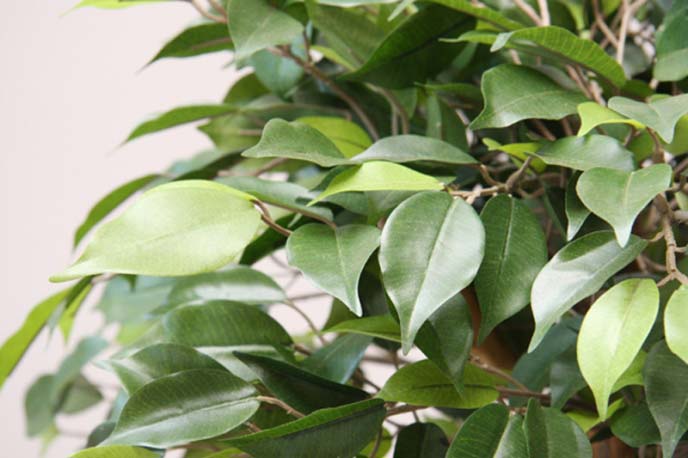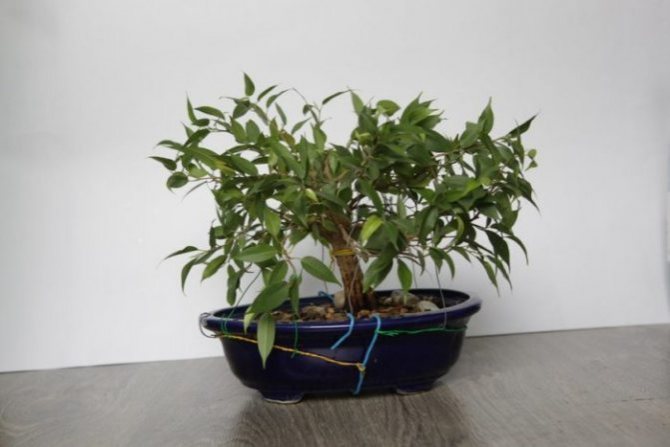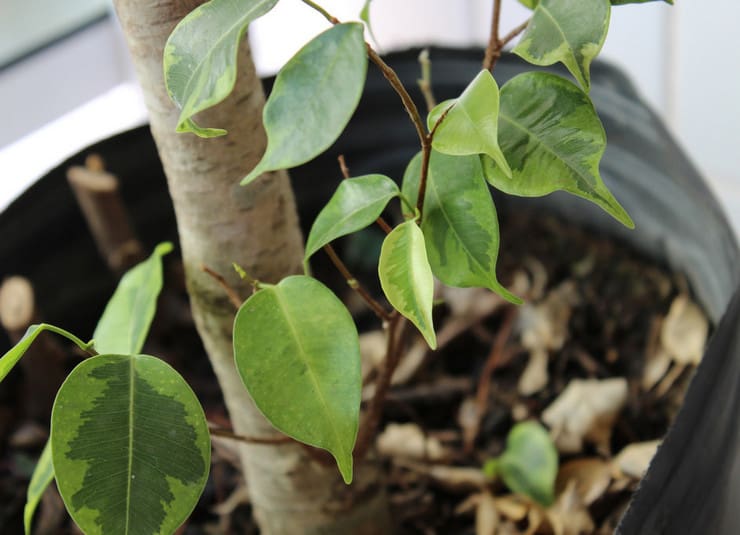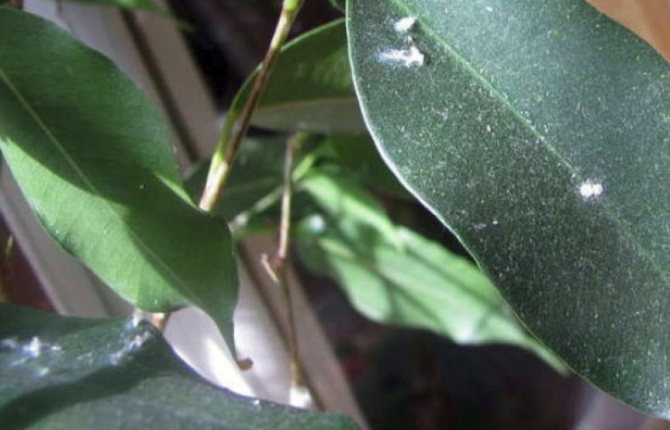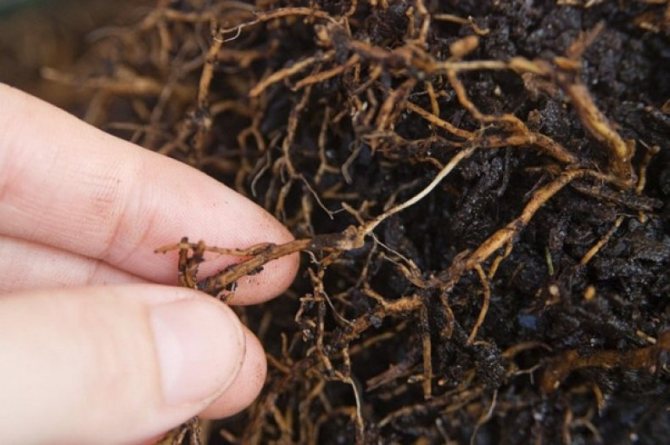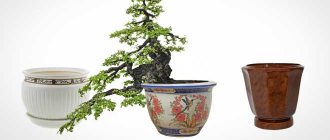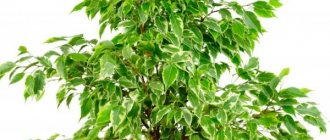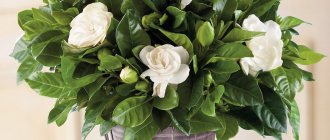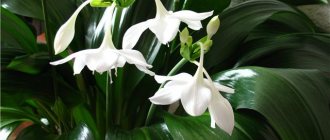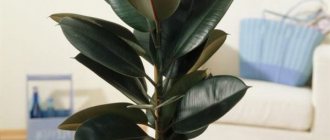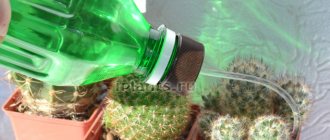Description and appearance of ficus Benjamin Natasha
Ficus Benjamina Natasha is a representative of evergreens from the Mulberry family. These are the main features of this ficus:
- powerful root system that can go beyond the soil;
- the trunk is round and light brown;
- branched shoots, drooping;
- pointed leaves with smooth edges, smooth and slightly curved in the center.
The peculiarity of this house plant is the absence of flowering. It is impossible to achieve it. This only happens in a natural environment.
Important! The main difference between domestic and wild ficus is size. In an apartment, the flower is very low. But, being in nature, it can exceed 2.5 meters in height. Accordingly, the size of the leaves of indoor trees is much smaller.
Ficus Benjamina Natasha grows in tropical parts of Africa and Asia. It can be found on the coast or at the foot of the mountains. It is rare in temperate latitudes.
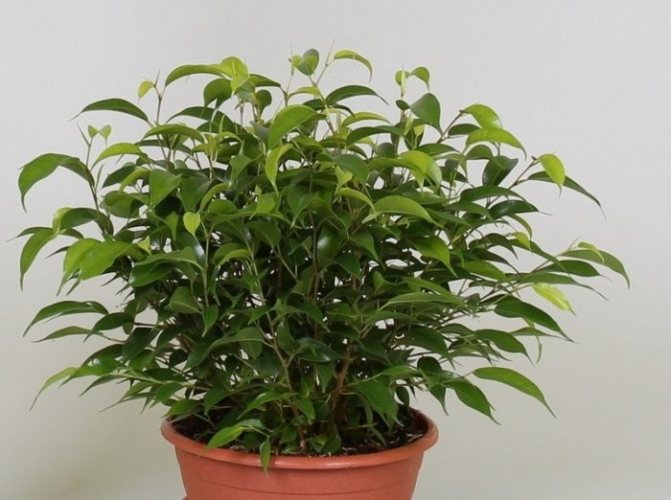
Description of the plant
Ficus "Natasha" - one of the smallest varieties of ficus Benjamin, growing in the form of a bush. At home - the islands of Java, Ceylon, Borneo or in the subtropics of Australia - this plant can reach up to 10 meters. At home, the bush grows up to 40 cm. The thin, flexible trunks of these ficuses can be twisted several pieces in one pot to create one plant with a fluffy crown in the bonsai style.
Oval, curved leaves of "Natasha" are densely dotted with thin branches. The leaves are 3.0 by 1.5 cm in size, their surface is slightly shiny. The color can be different: from saturated green, monochromatic, to light green with white spots and veins.
How is it different from other varieties?
Today there are 22 varieties of Benjamin ficus. The Natasha variety is considered to be quite popular among lovers of exotic home vegetation. The length of the leaf usually does not exceed 3 cm. The older the leaves, the darker they are.
A distinctive feature of this tree is its relative simplicity. The plant needs to be planted, watered and fed in a timely manner. However, it needs to be protected from direct sunlight. Therefore, on hot days, the tree should be sprayed with water from a spray bottle. It is also important to ventilate the crown daily with gentle shaking.
The advantages of this variety:
- unpretentiousness in comparison with other types;
- the ability to easily form a crown;
- a large number of leaves;
- affordable price for ficus in specialized stores.
This type of ficus allows you to show imagination when pruning the crown. What form it will have depends only on the owner of this tree.
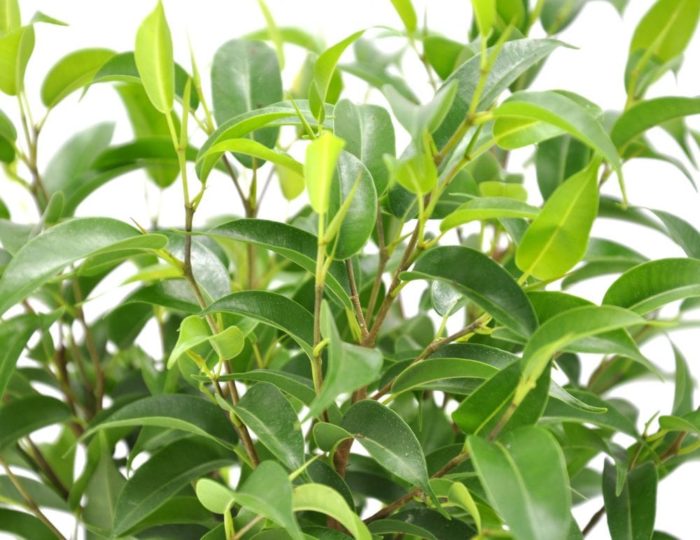

Is a transplant required after purchase?
It is unknown how long the plant was in the store. In any case, small pots are used there. Therefore, it is recommended to transplant it after purchase.
A healthy plant should change its capacity every 2-3 years. After purchase, you need to give the plant 7-12 days to acclimatize. When transplanting, it is removed from the pot along with the soil.
Important! In flower shops, the plants are planted in temporary soil. But after buying a ficus, there is no need to use such soil in the future. It needs to be carefully transplanted. However, it is not recommended to rinse the roots.
At the bottom of the new container, it is required to lay out expanded clay, which will perform the function of drainage, and pour prepared soil on top. Next, the tree itself is placed in the pot, the root of which is covered with soil. It should be noted that you should not take a pot "for growth". Its diameter should be 3-5 cm larger than the previous one.
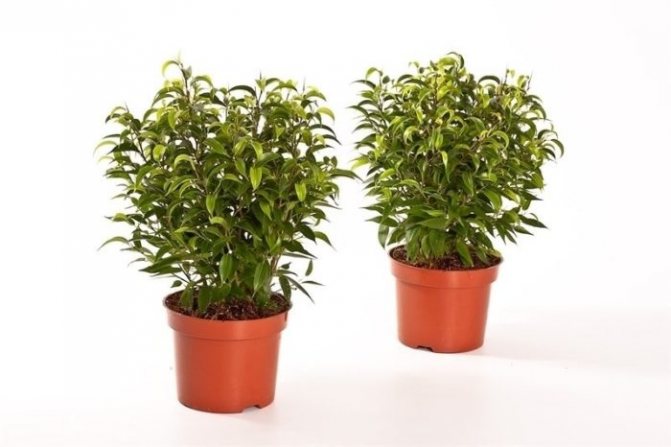

Temporary soil can adversely affect the plant, and it begins to wilt. This is due to the lack of nutrients that are not suitable for normal growth over time.
When buying a healthy ficus, you need to pay attention to the following:
- no signs or fresh cuts on the trunk;
- all branches with foliage;
- greens are bright, with no signs of drying or spots;
- does not have pests.
If there is a suspicion that the plant is sick, it is not worth buying.
Pruning
Ficus pumila flower - description and home care
Ficus Natasha only needs formative pruning. It is used to:
- form a standard tree;
- stimulate the growth of new shoots;
- give the bush a decorative look.
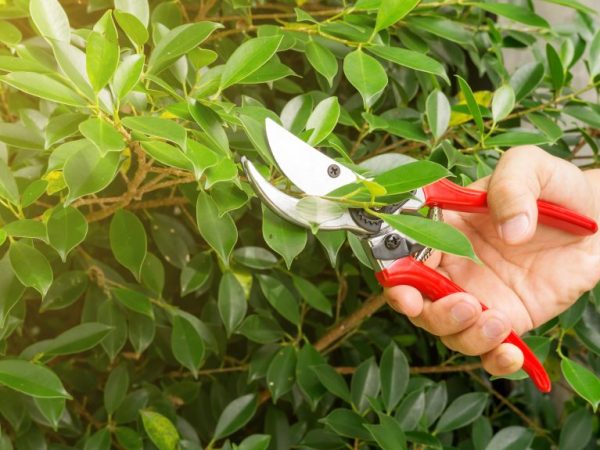

Flower pruning
The procedure is performed in the spring, since at this time new shoots are formed on the trunk, and pruning provokes their growth.
Important! Transplanting and pruning at the same time is not recommended - this can have a negative effect on the flower.
Home care
Ficuses require increased attention. Therefore, it is worth considering the main nuances of caring for this plant.
Watering
It is necessary to water the soil in a timely manner. In this case, you need to calculate the optimal time for watering. The following is required:
- air humidity;
- room temperature;
- plant size;
- season.
It is recommended to moisten the soil when it dries out to a depth of 1 cm. Water should be used warm and settled. The chlorine contained in the water has a negative effect on the flower, burning the foliage. Watering should be thorough, with excess liquid removed after 30 minutes.
You can arrange a ficus shower by spraying from a spray bottle. This will be a nice addition. However, waterlogging should be avoided.
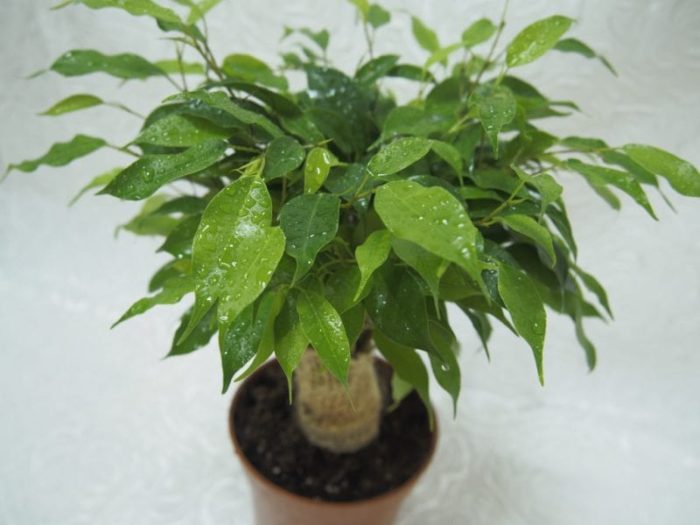

Fertilizer
Outside of nature, ficuses grow rather slowly. But top dressing can speed up this process. For this, any water-soluble palm mixture is used. These include "Gumisol", "Rainbow" and many others.
It is required to apply top dressing in accordance with the instructions. Excessive introduction into the root system can destroy the plant. The following minerals need to be in sufficient quantity:
- phosphorus;
- potassium;
- phosphate;
- iron.
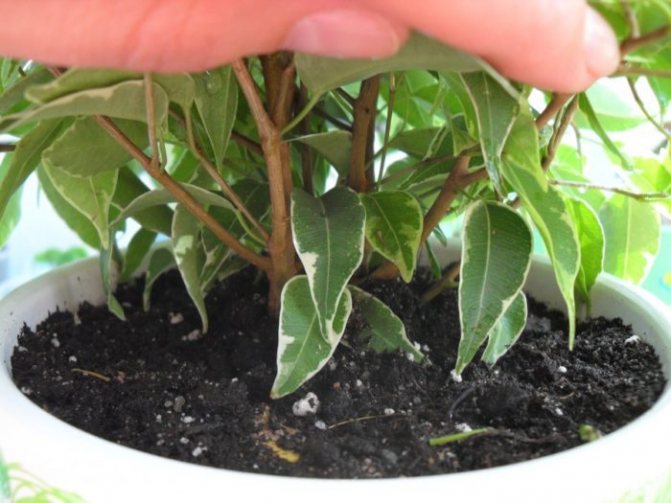

Important! Top dressing occurs only during active growth (spring and summer), and during the rest period (winter), the ficus does not need to be disturbed. During the growing season, it is worth giving him minerals every 2-3 weeks. The first dose should be significantly less than the instructions. This is necessary in order to study the possible side reactions of the plant. If it feels great, then you can continue to use it.
Lighting
This plant needs a lot of light. Therefore, the pot should be on the south side. It is important that the windows are well lit, otherwise a crooked trunk may form.
Important! It is necessary to protect the plant from direct sunlight, otherwise you cannot do without leaf burns.
Temperature and humidity
Humidity and air levels are moderate. The plant tolerates a short drought well, but it quickly dies when waterlogged. The grower has the opportunity to succeed in growing healthy ficus if he maintains a humid climate in the room where the plant is located by installing a humidifier or spraying his pet twice a day.
It is desirable to maintain the temperature at the same level throughout the year. Optimum mark: + 23-25 degrees.Winter minimum temperature: +10 degrees, if lower - the plant dies. It is worth noting that plants can suffer from fairly low temperatures.
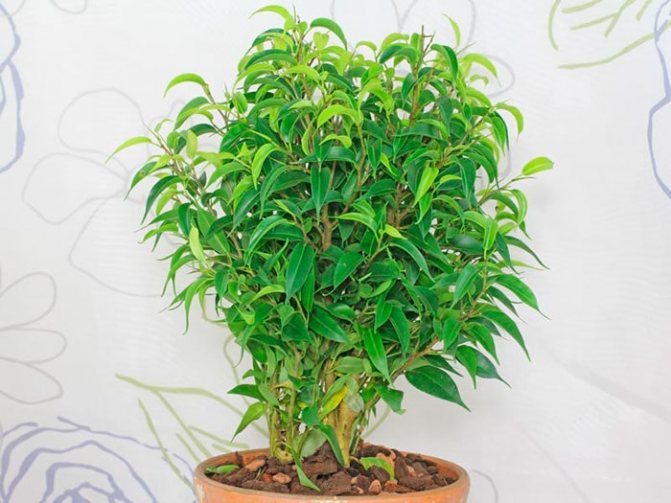

Pruning
Ficus requires regular pruning. This will form the crown and skeletal branches, as well as remove small diseased areas of the bush. What branches need to be cut:
- lower ones that appeared on the trunk;
- without side shoots.
- the upper ones, on which there are no leaves or there are few of them;
- dry;
- broken pieces of wood.
Pruning is required as the ficus grows, but at least 2 times a year.
It is recommended to form a crown in early spring, when the tree begins to grow intensively. Pruning allows you to rejuvenate the shoots and remove all excess so that the ficus concentrates on the growth of new branches and leaves.
Important! Pruning requires pruning shears. Before use, it must be disinfected with alcohol or other alcohol-containing liquids.
The pruning rule is to remove all unnecessary, leaving only 20 cm of the main shoots, each of which should have 5-7 leaves. Thick stems are cut at an angle. All sections must be treated with activated carbon.
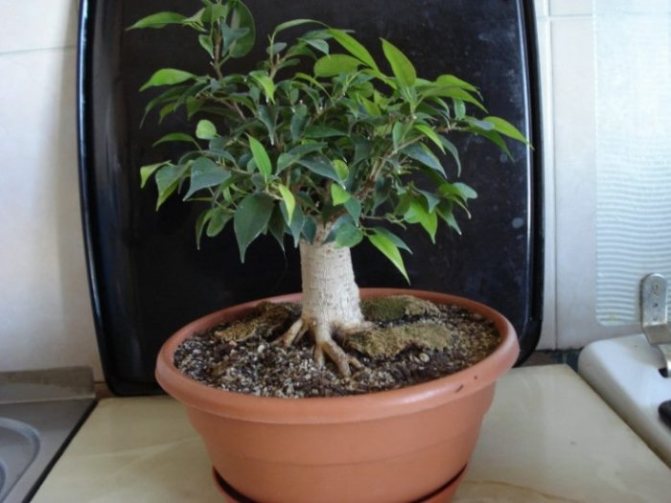

Crown formation
Ficus easily tolerates pruning. With its help, the tree is given a certain shape. The classic version is a ball or stem in several tiers. Experienced flower growers practice bonsai craftsmanship, create complex shapes.
Young plants are easier to form and grow new shoots faster. Pruning is carried out in late spring - early summer. Unscheduled pruning is allowed at other times of the year if the plant has grown strongly and lost its shape. During pruning, it is recommended to adhere to the following rules:
- Too many branches are not cut at one time. It is recommended to do this gradually, focusing on the appearance and condition of the plant.
- Before cutting, the instrument is sharpened and sterilized.
- The cut is made at an angle. Cut branches pointing up.
- They try not to tear off excess leaves, not to damage the bark.
To increase the decorativeness of the trunks, they are intertwined, fixing with a thread. As it grows, new turns are added.
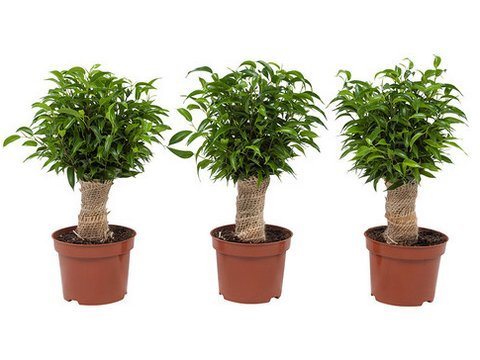

Advice! In summer, ficus can be taken out onto the balcony. Fresh air and an abundance of sunlight will have a beneficial effect on his condition.
Difficulties in growing Benjamin Natalie's flower
The most difficult thing is to choose the right place for such a capricious plant. Here are some guidelines for which location to choose:
- air humidity about 50%;
- temperature - 23-25 degrees;
- the distance from the battery is at least 1 meter;
- far from open windows and doors;
- the entire crown should be illuminated evenly;
- you should not constantly move the pot, since the ficus prefers to be in one place.
Attention! It is important to choose the right microclimate. If the ficus Benjamin Natasha stays in the shade for a long time, he will get sick. With a strong lack of light, the leaves stop growing.
Quite big difficulties arise due to the fact that it often has to be sprayed and periodically placed under the shower. With the wrong care, it stops growing. There is also a risk of developing various diseases. They develop rapidly, completely destroying the plant.
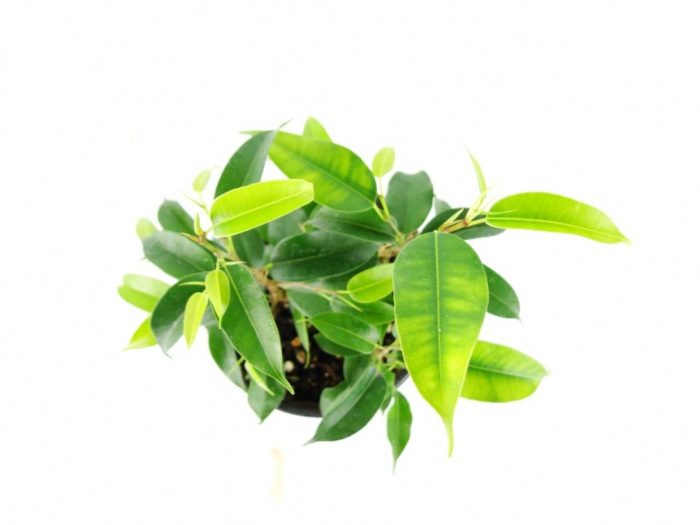

What if the leaves turn yellow and fall?
From time to time you can face such a problem. Leaves may turn yellow:
- Improper watering. Due to the large amount of moisture in the soil. You can try not to water the ficus for a while. Also, you cannot turn the pot. If after 5-7 days there is an improvement, then this is precisely the reason. If there is no improvement, then the plant needs to be transplanted. Some roots will turn out to be rotten. They are removed with a knife.
- Cold. A small draft, a sudden change in temperature, or cold water for irrigation can cause yellow leaves to fall off. So that he does not face the cold.
- Transplanting is stressful, so you need to be prepared for the loss of a few leaves. It is normal that the ficus will need some time to adapt.
- Lack of trace elements. Magnesium, iron and nitrogen are required in sufficient quantities for normal growth and development. Fertilize according to the instructions in spring and summer. Excessive minerals are another cause of yellowing and falling foliage.
- Pests. They are easy to spot upon a superficial examination. It is necessary to get rid of them with fungicides or other poisons.
- Diseases. They are accompanied not only by yellowing of the leaves.
These are the main causes of yellow leaves falling off.
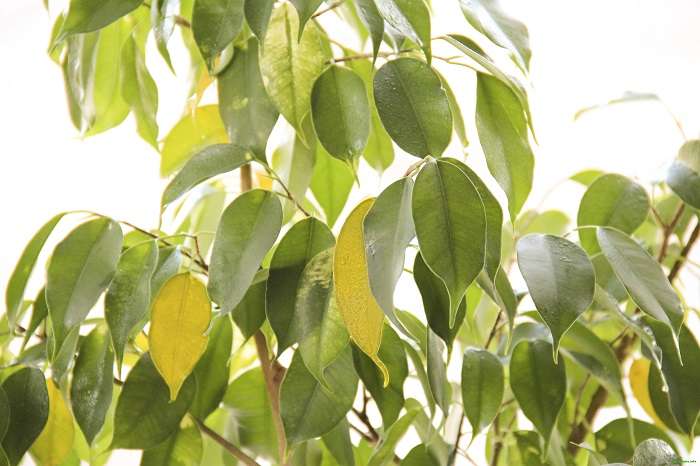

Darkening of the stem
Most often, the trunk darkens due to the following reasons:
- a sharp change in the microclimate;
- the appearance of root rot;
- mealybug and spider mite, which feed on plant sap (requires the use of fungicides).
If there is anything from this list, then the problems are really serious and urgent measures are required to save the plant.
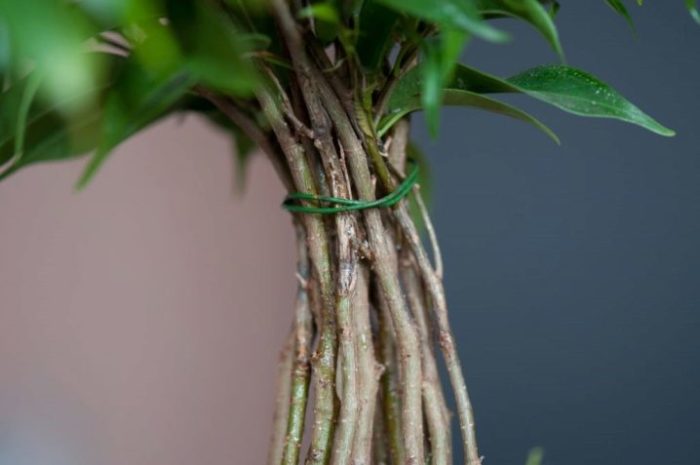

Twisting the sheet plate
For Ficus Benjamin Natasha, curling of sheets is not the norm, unlike the Baroque variety. The following factors can cause this phenomenon:
- being near the battery in winter;
- high air temperature;
- moisture deficiency or waterlogging of the soil;
- sunburn;
- the use of cold water for irrigation;
- damage by pests or infections.
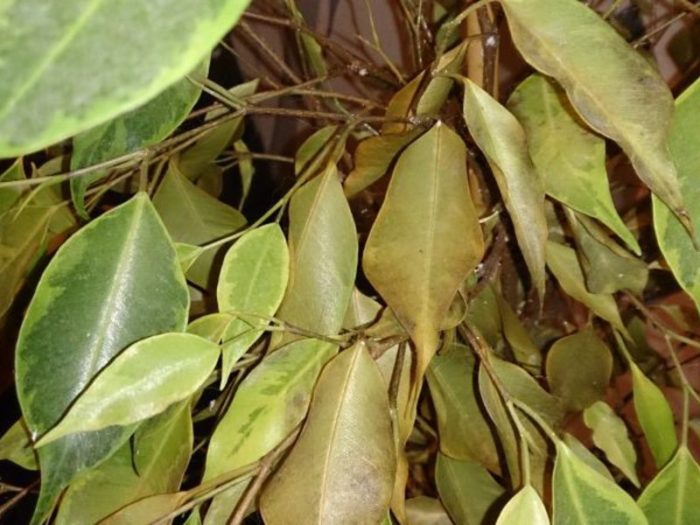

There are two reasons: improper care or exposure to pests. If the latter are not found, then the potential cause of the curl should be identified and corrected.
Important! The leaves of the ficus are green, do not have dots. Some pests are small, so they look like a large accumulation of spots on them. These pests include mealybugs, spider mites, thrips and nematodes. Thus, insects can be found quite easily.
Diseases and pests
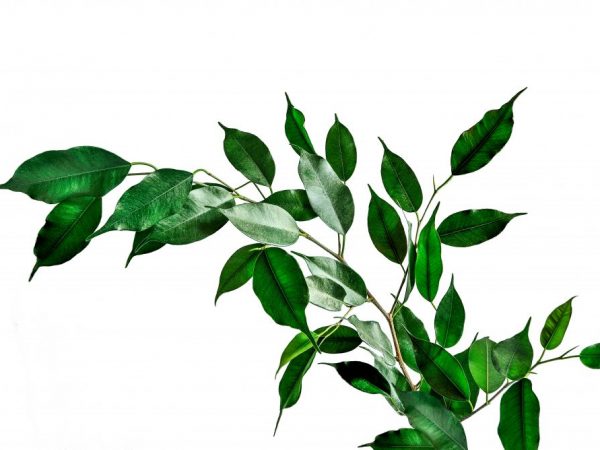

Ficus is often sick
Ficus Benjamin is susceptible to many pathologies, which complicates care.
A flower can get sick with a lack of lighting in the winter months, with frequent drafts. The painful condition is manifested by shedding foliage. Also, the leaves turn yellow and fall off when overflowing due to decay of the roots.
Of the pests, the ficus is attacked by:
- aphid;
- shield;
- mealybug;
- mite.
To combat insects, insecticides are used:
- Karbofos;
- Actellik;
- Inta-Vir.
For the prevention of pest damage, it is advisable to periodically wipe the ficus leaves with a cotton swab moistened with soapy water.
With proper care and favorable indoor conditions, the plant is less susceptible to pathologies.
Reproduction methods
Cutting is the best way to propagate this tree. It is recommended to take a shoot 10-12 cm long during the pruning period, that is, in the spring or early summer.
Here's what you need to do:
- cut off the stalk;
- put the shoot in water and wait for the juice to dissolve;
- replace water;
- wait for the first roots. They will appear in 2-3 weeks;
- plant a tree in the ground.
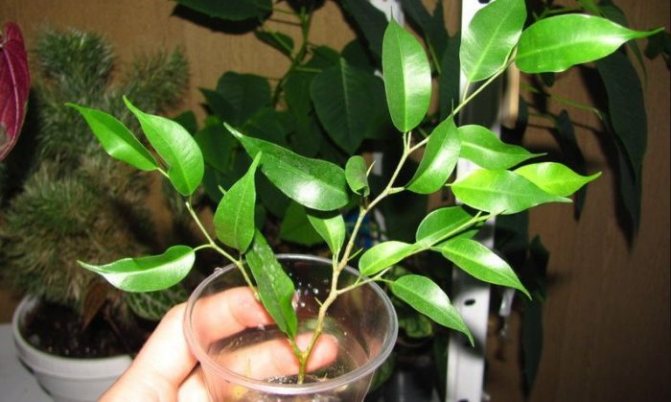

Important! When the sap of the plant has dissolved, the water must be replaced. The first roots will appear in 2-3 weeks. Then you can plant in the ground with a ratio of turf soil and sand 1: 1. Add any root activator to the ground. Care must be taken not to damage the nascent root system.
Watering and feeding
It is better to water Natasha in several stages. Thanks to this, it will be possible to achieve an even distribution of the liquid in the ground. Watering must be carried out only with water that has settled at least during the day. The water temperature should be at room temperature.


It is worth watering the plant with settled water.
Ficus does not tolerate dry land, but excessive watering with water will also be harmful to it. Therefore, it is recommended to pour out the water remaining in the pan after watering, otherwise the roots of the flower will rot and it will die.
If at some point in time the leaves of the ficus began to turn yellow, the reason may be poor watering or a change in regime.All that needs to be done is to help the tree adapt and establish its watering regime.
Important! As for feeding, it is better to carry it out in the spring-summer period, since it is at this time that the plant begins to grow actively. You can feed the flower with the help of mineral fertilizers, but you should monitor compliance with the dosage. If you want to achieve a dense flower crown, then nitrogen fertilizers can be used.


It is better to feed the plant during the period of active growth, i.e. in warm seasons
It is worth noting that it is not recommended to use various dressings at the same time, since the tree may suffer as a result of this from the fungus.
Superstitions and omens associated with the plant
There are several signs associated with the ficus in the house.
- This plant is believed to cause gossip and scandals in the home. He is also called muzhegon.
- In other countries, it is a symbol of family and harmony in the house.
In Thailand, he helps solve many difficult problems. And in some Asian countries, it is believed that ficus will help conceive a child.
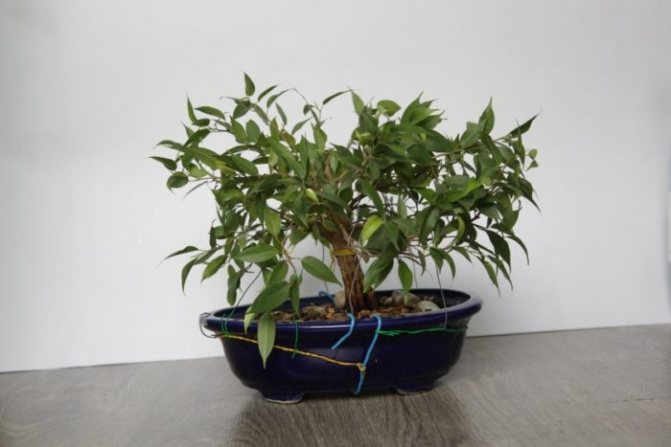

Thus, if you do not follow the basic rules of care, you can provoke yellowing and falling of the leaves of the plant. Ficus does not require much maintenance. The main thing is that it is sufficiently humid and warm. Having studied the features of caring for a ficus, you can grow a large and healthy tree.
5 / 5 ( 1 voice)

